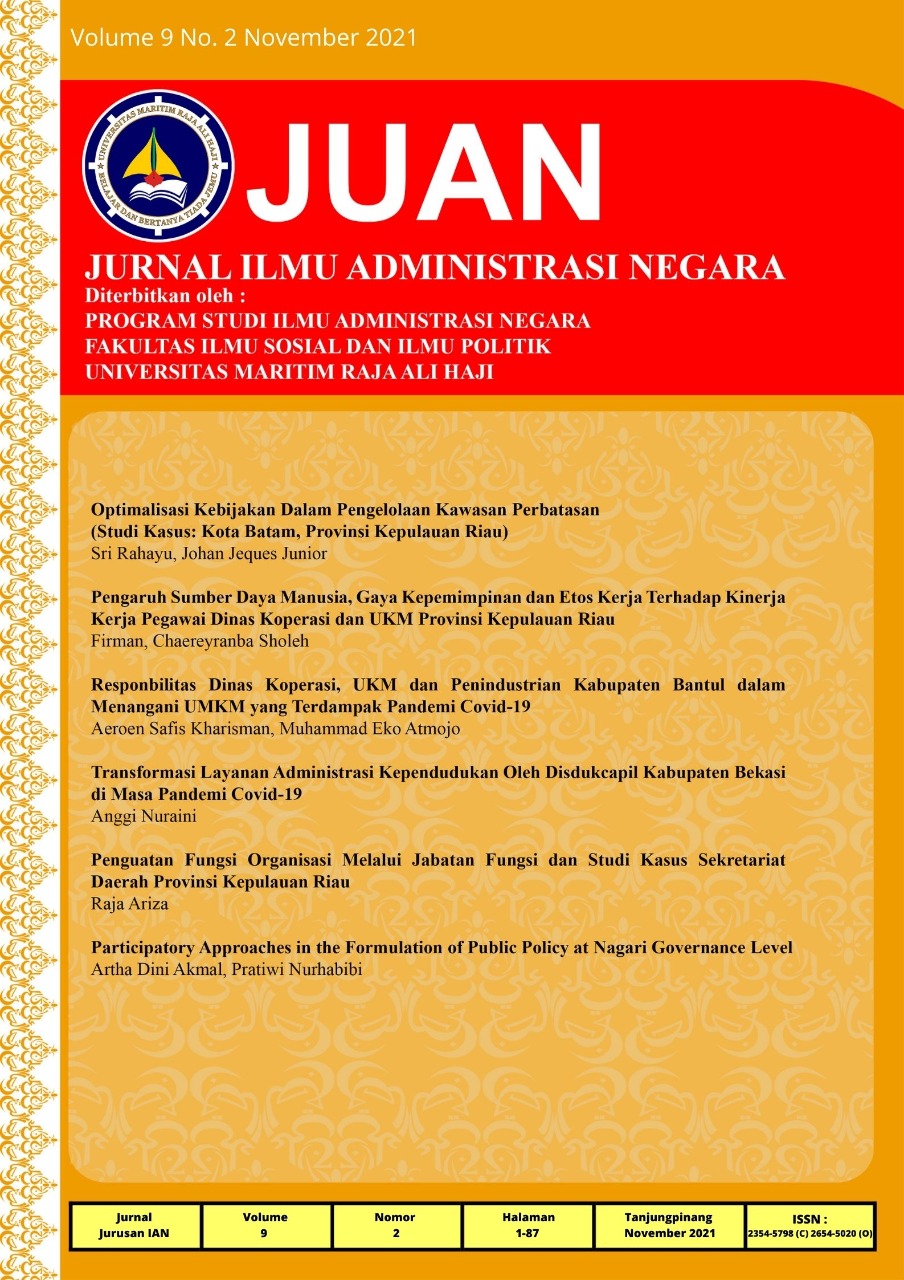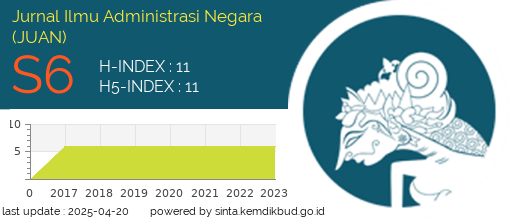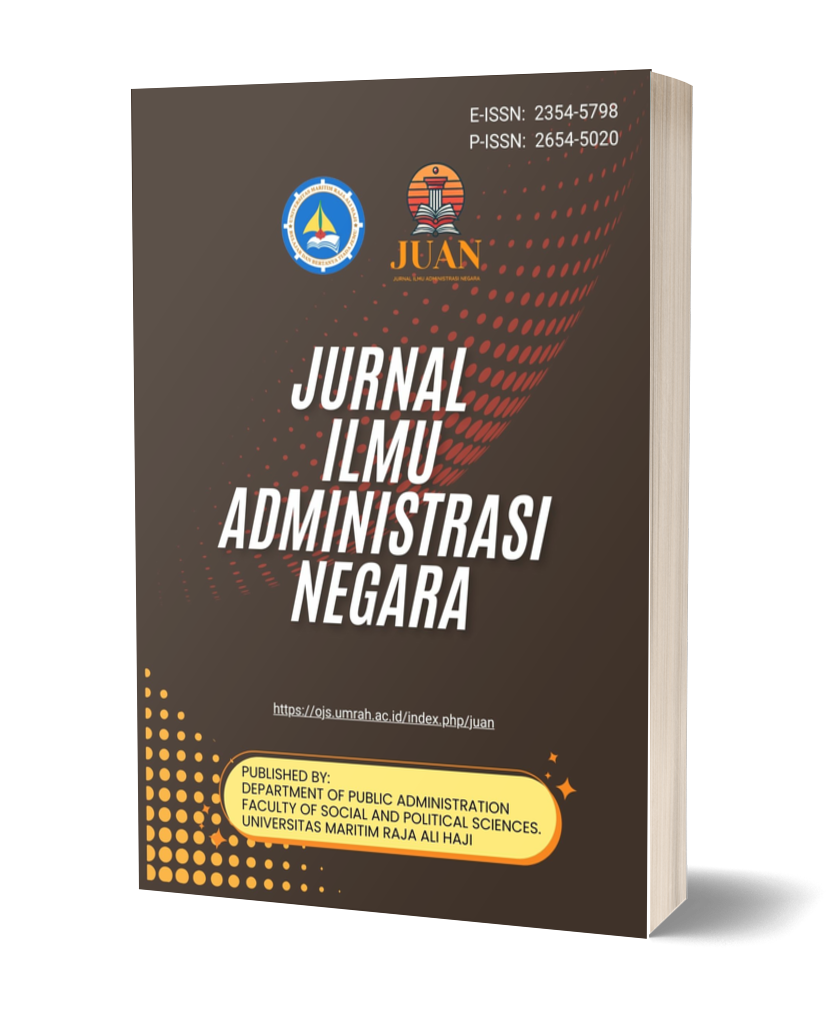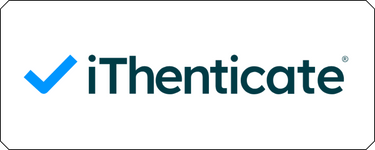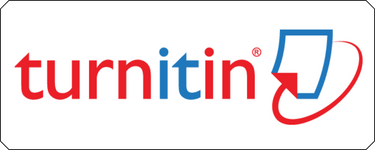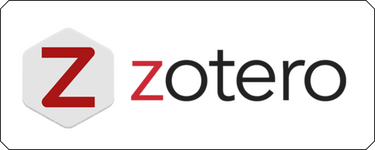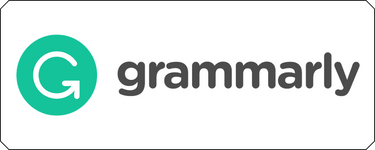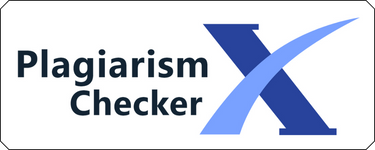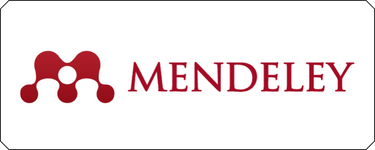Participatory Approaches in the Formulation of Public Policy at Nagari Governance Level
DOI:
https://doi.org/10.31629/juan.v9i2.3917Keywords:
Participatory Approaches, Formulation of Public Policy, Nagari Governance LevelAbstract
The smallest administrative unit in West Sumatra is not known as the village government but the Nagari government. West Sumatra uses the name Nagari Government to respond to the implementation of regional autonomy, which gives local governments the freedom to manage their government according to their respective local wisdom. It has the same main tasks and functions. In terms of public policymaking (policy formulation), there is still an element of adat in the policy formulation process. West Sumatra involved several actors in making this Nagari regulation, including Walinagari and its apparatus, BPRN (Nagari People's Representative Body), and KAN (Nagari Customary Density). What often happens is that many Nagari governments issue Nagari regulations based on routine activities. In contrast, regulations that are derived from people's aspirations can be said to have not existed in the 2017-2019 period. As happened in 6 Nagari in the salimpaung sub-district, there is no Nagari regulation made based on the community's needs. So far, the Nagari regulations are made to meet the needs of routine activities such as the preparation of the Nagari budget and development plans. This phenomenon has attracted the attention of researchers because the Nagari government also has the responsibility to make rules according to the needs of the community. The researcher also wants to know how the community participates in the process of formulating Nagari regulations, can these Nagari regulations be by the people's choices
Downloads
References
Anderson, James E. 1970. “Public Policy Making.â€
Dunn, William N. 2003. Pengantar Analisis Kebijakan Publik Edisi Kedua.
J, Kaloh. 2007. “Mencari Bentuk Otonomi Daerah.†PT Rineka Cipta.
King, Anthony. 1985. “John W. Kingdon, Agendas, Alternatives, and Public Policies, Boston: Little, Brown, 1984, Xi + 240 Pp., $9.95.†Journal of Public Policy. doi: 10.1017/s0143814x00003068.
Kusumanegara, Solahuddin. 2010. Model Dan Aktor Dalam Proses Kebijakan Publik. Vol. 3.
Moleong, Lexy J. 2019. “Moleong, †Metodologi Penelitian Kualitatif Edisi Revisiâ€. Bandung : Remaja Rosdakarya.†PT. Remaja Rosda Karya.
Riant, Nugroho. 2006. Kebijakan Publik Untuk Negara-Negara Berkembang Model-Model Perumusan, Implementasi, Dan Evaluasi.
Riant, Nugroho. 2008. Public Policy.
Strauss, A., and J. Corbin. 1997. “Dasar-Dasar Penelitian Kualitatif, Prosedur, Teknik Dan Teori Grounded.†Surabaya: PT Bina Ilmu.
Sugiyono. 2013. “Metode Penelitian Pendidikan Pendekatan Kuantitaif, Kualitatif, Dan R&D
Sugiyono. 2013. ‘Metode Penelitian Pendidikan Pendekatan Kuantitaif, Kualitatif, Dan R&D.’ Metode Penelitian Pendidikan Pendekatan Kuantitaif, Kualitatif, Dan R&D. Https://Doi.Org/10.1.†Metode Penelitian Pendidikan Pendekatan Kuantitaif, Kualitatif, Dan R&D.
Usman, Abdul Kadir Bin. 2011. “Sistem Pemerintahan Kenagarian Di Sumatera Barat.†(Pemerintahan Nagari).
Wahab, Solichin Abdul. 2008. Analisis Kebijaksanaan : Dari Formulasi Ke Implementasi Kebijaksanaan Negara.
Downloads
Published
Issue
Section
License
You are free to:
- Share — copy and redistribute the material in any medium or format for any purpose, even commercially.
- Adapt — remix, transform, and build upon the material for any purpose, even commercially.
- The licensor cannot revoke these freedoms as long as you follow the license terms.
Under the following terms:
- Attribution — You must give appropriate credit, provide a link to the license, and indicate if changes were made . You may do so in any reasonable manner, but not in any way that suggests the licensor endorses you or your use.
- ShareAlike — If you remix, transform, or build upon the material, you must distribute your contributions under the same license as the original.
- No additional restrictions — You may not apply legal terms or technological measures that legally restrict others from doing anything the license permits.

